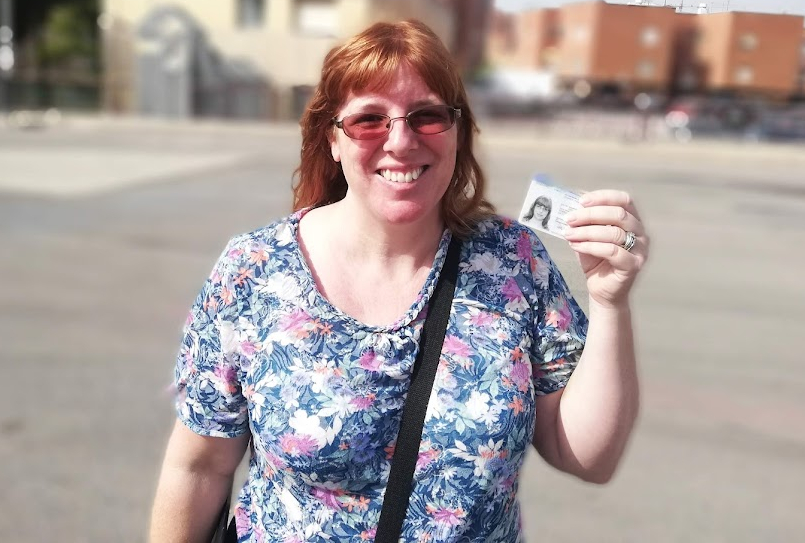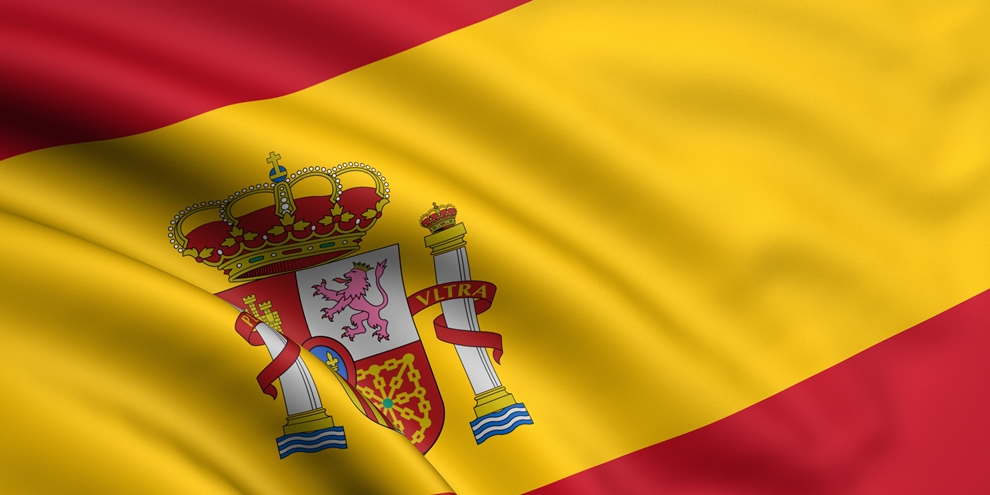
THE UK-EU WITHDRAWAL AGREEMENT
All UK nationals who were legally resident in Spain at the end of 2020 have their rights protected, including the right to live and work in Spain as well as lifelong access to healthcare for UK state pensioners, including those who claim a pension in the future.
In July 2020, the Spanish Government introduced a new residency document for UK nationals, known as the ‘Tarjeta de Identidad de Extranjero (TIE)’ – the Foreigner’s Identity Card.
If you already have the green residency certificate – known as the CUE – in A4 or credit-card sized version, you are advised to change to a TIE as soon as possible since it has been confirmed by the British Embassy that the green certificate will not considered a valid proof of residency when the EU’s ‘Entry Exit System (EES)’ comes into operation. This will be a system for registering non-EU citizens (including those from the UK) each time they enter or exit the EU which will replace the time-consuming procedure of manually stamping of passports. UK citizens legally resident in Spain will be exempt from registering with EES if they hold the TIE card which provides the biometric data required by the system.
THE TIE APPLICATION
There are four steps to follow; click on the link for each step for more information:
Step 1 – Getting Prepared
Step 2 – Getting an Appointment
Step 3 – The Application Process
Step 4 – Collecting your Card
STEP ONE
Getting Prepared
The first step in the process is to prepare all the necessary documentation which will need to be presented to the National Police in Alicante.
You will need the following:
- Form EX-23 – Solicitud de Tarjeta (Art.18.4 del Acuerdo de Retirada)
- Form Modelo 790 Código 12 – Reconocimientos, Autorizaciones y Concursos
- Green EU Residency Certificate or Card
- Certificado de Empadronamiento – less than three months old.
- Passport
- One photograph, DNI/TIE size
Form EX-23 – Solicitud de Tarjeta (Art.18.4 del Acuerdo de Retirada)
This is your application form. Download it here and fill it out either online or in black ink.
Page 1 – Section 1
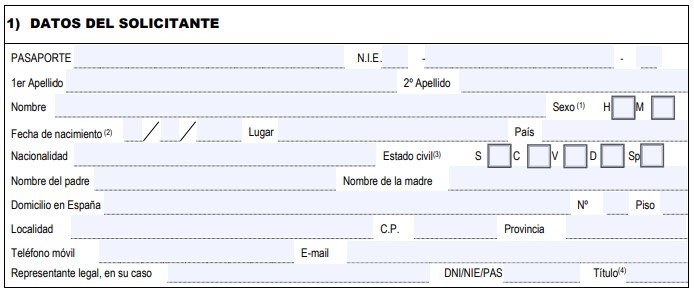
It is absolutely essential to fill out this section correctly and without errors. Use capital letters and, if you’ve printed it out, use black ink only.
- PASAPORTE – your passport number
- NIE – your NIE number, i.e. X-12345678-A
- 1er Apellido – your surname
- 2er Apellido – leave blank
- Nombre – your first and second names
- Sexo – Sex, H-male / M-female
- Fecha de Nacimiento – date of birth in the format ‘dd/mm/yyyy’
- Lugar – place of birth
- País – country of birth, i.e. REINO UNIDO
- Nacionalidad – nationality, i.e. REINO UNIDO
- Estado Civil – marital status, S-single / C-married / V-widowed / D-divorced / Sp-separated
- Nombre del Padre – father’s full name
- Nombre de la Madre – mother’s full name
- Domicilio en España – address (street name), i.e. CALLE MAYOR
- No. – house number / apartment block number
- Piso – apartment number (leave blank if you live in a house)
- Localidad – your municipality, i.e. JÁVEA
- C.P. – your municipality’s post code, i.e. 03730 (for Jávea)
- Provincia – your province, i.e. ALICANTE
- Teléfono Móvil – your mobile phone number
- E-mail – your e-mail address
- Representante Legal – leave blank
Page 1 – Section 2
Leave blank
Page 1 – Section 3

Your contact details. You don’t have to fill it out but we recommend doing so just in case.
- Nombre/Razón Social – your full name
- DNI/NIE/PAS – your NIE number, i.e. X-12345678-A
- Domicilio en España – address (street name), i.e. CALLE MAYOR
- No. – house number / apartment block number
- Piso – apartment number (leave blank if you live in a house)
- Localidad – your municipality, i.e. JÁVEA
- C.P. – your municipality’s post code, i.e. 03730 (for Jávea)
- Provincia – your province, i.e. ALICANTE
- Teléfono Móvil – your mobile phone number
- E-mail – your e-mail address
Tick the box to consent to data protection.
Page 2
Nombres y apellidos en titular: write your full name
Page 2 – Section 4
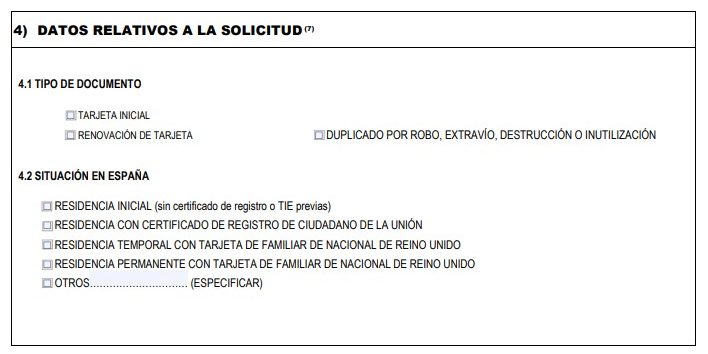
- 4.1 TIPO DE DOCUMENTO
Select RENOVACIÓN DE TARJETA - 4.2 SITUACIÓN EN ESPAÑA
Select RESIDENCIA CON CERTIFICADO DE REGISTRO DE CIUDADANO DE LA UNIÓN
Print out the form. You don’t have to sign it straight away – in fact, we recommend not signing it until the day that you attend your appointment.
Form Modelo 790 Código 12
You will need to pay a small fee for your application and this needs to be paid in advance at a bank. You will receive a stamped receipt which you will then submit with the rest of the documentation when you make your application at the National Police in Alicante.
Form Modelo 790 is a standard form for paying taxes and fees and can only be filled in online and then printed out to take to the bank. You’ll need to ensure that you select the right box for the application you are making so that you will pay the right amount.
You can access the form here.
Click on Rellenar formulario y descarger to access the form.
IDENTIFICACIÓN
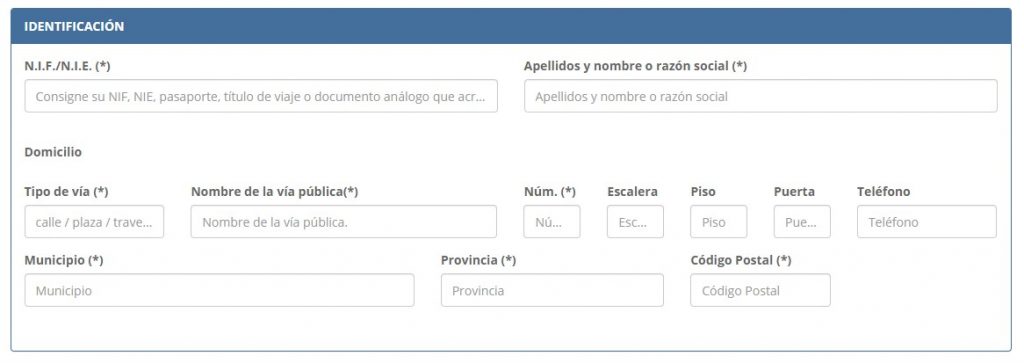
- N.I.F./N.I.E – your NIE number, i.e. X-12345678-A
- Apellidos y nombre or razón social – surname then names, i.e. SMITH, JOHN HENRY
- Tipo de vía – road type, i.e. CALLE, CARRER, AVENIDA, CAMÍ, etc.
- Nombre de la vía publica – road name, i.e. MAYOR, PALMELA, ULTRAMAR, etc.
- Núm. – house number / apartment block number
- Escalera – stairwell number (apartment)
- Piso – floor (apartment)
- Puerta – apartment number
- Telefóno – telephone contact number
- Municipio – municipality, i.e. JÁVEA
- Provincia – province, i.e. ALICANTE
- Código Postal – municipality post code i.e. 03730 (for Jávea)
AUTOLIQUIDACIÓN
Make sure that Principal is selected.
Tarjetas de identidad de extranjeros (TIE) y certificados de registro de residentes comunitarios.
Select: “Certificado de registro de residente comunitario o Tarjeta de residencia de familiar de un ciudadano de la Unión.”
DECLARANTE
- Localidad – your municipality, i.e. JÁVEA
- Fecha – the date will be autofilled
INGRESO
- Importe euros – the amount will be autofilled, i.e. 12.00 €
- En efectivo – select this option if you are paying in cash in any bank
- E.C. Adeudo en cuenta – select this option if you are paying at your own bank and then enter your account in IBAN format in the field below.
Introduce the characters displayed in the box below to prove that you are human and then press [Descargar impreso rellenado] to generate a three-page PDF document which you should print out and take to the bank to pay the required fee. Note: this payment cannot be made using an ATM; we asked, you can’t do it.
Take the whole document with you with the rest of the documentation.
EU Residency Certificate
You’ll need to dig out your original EU residency certificate. If you have lost it, you have no option other than to apply for a replacement – and that’s a whole different ball game.
Certificado de Empadronamiento
This document proves that you are registered as a resident in Jávea and should be requested from the town hall offices in Avenida Trenc d’Alba – the OAC building in Portal del Clot – as the document can’t be more than three months old.
If you are making individual applications for exchange for TIE, we recommend getting a certificate for each person as you will not receive the same appointment time at the National Police station and each certificate can be personalised.
Make a copy of this document for your own records as the National Police will take the original as part of the application process.
Passport
Your UK passport must have at least six months left on its validity at the time you are making the application. You don’t need to take a copy as the National Police will scan it during the application process.
In the event that it has expired and you have applied for a renewal, a copy of the expired passport and the renewal application must be provided.
Photograph
You must provide one photograph whose dimensions are smaller than the standard passport-sized photo. We used Aguedo in the church square in the heart of the historic centre for our photos and they charged us 7 euros for six photos, three of which were cut to the correct size for TIE (DNI size) and the other three normal passport size.
Once you have gathered all this documentation together, we recommend placing it all into a dedicated folder (with a pen) and it wouldn’t hurt to make at least one copy of your residency certificate, padron certificate and passport, just in case.
So, now we have our paperwork, we need to book our appointment.
STEP TWO
Getting an Appointment
After being unavailable for some time, appointments at Dénia have become available but they are very limited – we are told that there is only one person working on the TIE exchanges – so you may be lucky enough to get a more local appointment if you have the patience to refresh the following procedures until you receive one. Or if you fancy a day trip to Alicante, just pick any office as outlined below.
Note: If you are a couple or family and you are looking for multiple appointments, you will have to do separate appointment applications for each person. If you want appointment close together, each person should go online at the same time on different devices. It just needs a bit of coordination. Be aware that the appointment lists are time-sensitive and will time out after a few minutes.
Click here to access the government website to make the appointment.
- On the opening preamble page, scroll down to the bottom and click [Acceder al Procedimiento] to start the appointment process.
- PROVINCIAS DISPONIBLES – Select “Alicante” and press [Aceptar].
- OFICINA – Select “Cualquier Oficina” as we’ve found that this will give you a better chance of getting an appointment quickly. In almost all cases, you’ll be given an appointment at the National Police Foreigner’s Office near the port in Alicante.
- TRAMITES OFICINAS DE EXTRANJERIA – ignore.
- TRAMITES CUERPO NACIONAL DE POLICIA – Select “POLICIA-TOMA DE HUELLA (EXPEDICIÓN DE TARJETA), RENOVACIÓN DE TARJETA DE LARGA DURACIÓN Y DUPLICADO”.
- Press [Aceptar].
- The next page confirms the documentation you will be required to provide for your application. Scroll to the bottom and click on [Entrar] to continue.
- Enter your NIE (i.e. X-12345678-A) and your NOMBRE Y APELLIDOS (for FULL NAME as it appears on your residency certificate or card) and for nationality in PAÍS DE NACIONALIDAD from the drop-down menu (in this case, REINO UNIDO), then click on [Entrar] to continue.
- On the next page click on [CITA PREVIA] to request an appointment. The system will provide the location of the appointment and the available slots for that appointment. If there are none available, the system will tell you immediately and you will have to wait and try again as they release more appointment slots daily.
- After selecting an appointment, you will receive a code on your mobile phone which you will need to enter straight away as the application is time-sensitive. If you are accepted, you will receive a confirmation e-mail which will include your appointment number, the office, the date, the time and the specific table to which you will need to submit your application.
So, we’ve got all the paperwork together and now we’ve have an appointment. Let’s head off to to get it done.
STEP THREE
The Application Process
Alicante
You may be presented with several options for this step of the process. Our guide assumes that you’ll be directed to the OEX in Alicante.
These are directions to the OEX Alicante in Calle de la Ebanistería, which is on the southern side of the city and is very easy to get to by car.
Head south on the A-7 motorway and skirt around Alicante as if you were heading to the airport. Continue to Junction 17B [Alacant | Alicante · Puerto] and join the A-31 towards the city. Near the end of the motorway, you’ll see Tien 21 on the left – the police station is beside that.
Get in the middle lane before you enter the roundabout and then work your way into the outside lane as you progress around it. Be aware of the traffic lights! As you come back around, there is a one-way road with traffic lights to the right of the ramp back onto the motorway. If you feel you’re in the wrong place (as we did the first time) then it’s safer to go back around and re-position yourself.
Once you’re on the road, after some 125 metres, there’s a car park on the right. We arrived late on a Wednesday morning in July and there were plenty of spaces so make this your first option. The foreigner’s office is only 250m walk. This parking area is also handy for after your appointment because when you leave it, you can get straight back onto the A-31 motorway via a slip road.
From the car-park, continue along the road in the same direction as the flow of traffic. At the next junction, there is a bar – EL AROMA – where you can have a coffee and use the bathroom, very useful if you are early for your appointment. Remember: you won’t be allowed access to the building until 15 minutes before your scheduled appointment. It’s a normal spot for Brits either waiting for their time or meeting up afterwards for a celebratory coffee.
The foreigner’s office itself is a little further up, a rather sombre entrance with several flags flying from masts above the entrance.
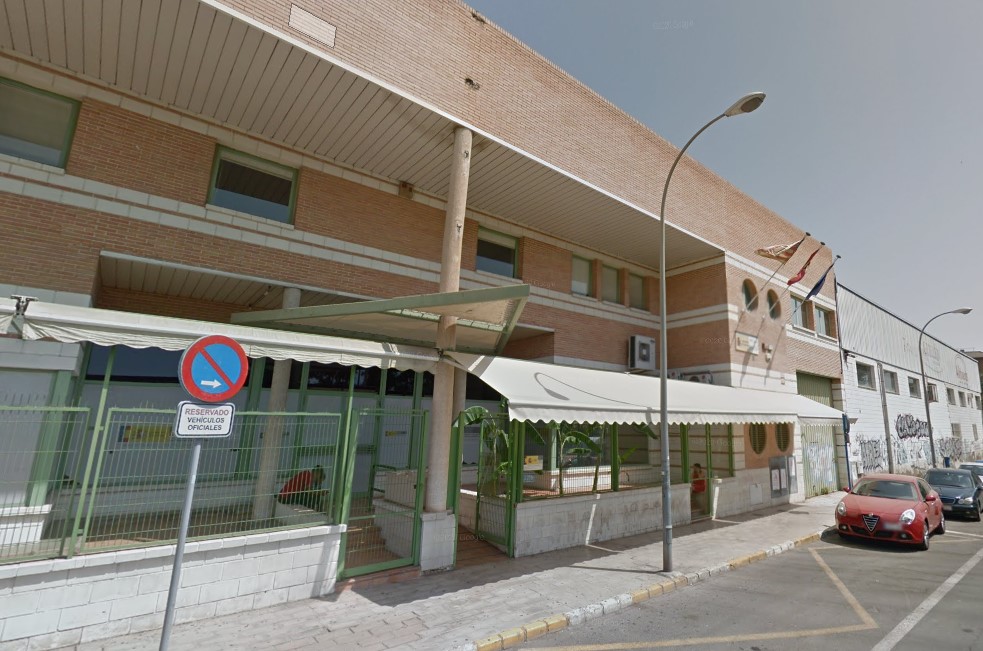
There is no need to queue. You may see people hanging around outside but they are likely waiting for their time to enter the building or waiting for friends or relatives. On entry, a police officer will check that you have an appointment before allowing you to continue so don’t forget a print-out of your confirmation email. Any bags (and quite possibly your paperwork if it is in a folder) will have to be passed through the X-ray machine whilst you will have to pass through the scanner arch.
Once you have collected your things from the X-ray machine and turn left. At the far end, to the left, there is a white machine. Press [CITA PREVIA] and enter your NIE number when prompted. Confirm your details and then collect the slip that is printed beneath the screen; this is your turn number.
Turn around and enter the waiting room. There are several rows of green chairs which are all facing a small TV screen on the wall. Sit down and wait for your turn number to appear; be aware that the numbers aren’t necessarily called in order so you need to keep an eye on the screen at all times and don’t be too concerned if a number is called which is higher than your own.
When your number appears, it will be announced several times as well as displayed on the screen with the SALA and MESA. Note that the MESA given when you made your appointment won’t always match the one that is displayed. So, for example, a loud recorded voice will announce “M-56 · Sala 3 · Mesa 30” and those details will also be displayed on the screen. It seems that Sala 3 is the BREXIT/TIE room and this is on the right-hand side at the back of the waiting room if you are facing the TV screen.
Head to your table, sit down and the process begins. Don’t worry about not speaking Spanish as it seems that most of the staff can speak English – and most will do so if they aren’t confident in your Spanish ability; don’t take it too personally!
It’s easier to hand over the documentation folder and let the administrator sort through what they need; in fact, it seems some desks actually encourage this. Make sure the documentation is original; in one case, we noticed an administrator hold the certificate up to the light to ensure that it was so; in another case, a laminated version was holding up the process and there was some debate as to whether it could be accepted.
Don’t forget your mug shot. This will be attached to a piece of card which you will then have to sign and then scanned after which the photo will be returned. Your passport will also be scanned.
The final part of the process is the digital fingerprinting. You’ll have to do both index fingers. First, your right hand, place the finger up to the second knuckle on the glass and hold flat for a moment until the administrator confirms all is okay, and then you’ll be told to roll it gently from side to side. You’ll do the same with the left hand before confirming that the process has worked by placing your right and then left index fingers back on the scanner.
Once the administrator is happy, they will return your original documentation to you (less the EX-23 form and most of the Modelo 790 form) along with an official stamped receipt (RESQUARDO) which we advise you swiftly check for correct details and spelling (it should say PERMANENTE which means that your residency is valid for ten years) and then keep safe since you will need it to collect your card.
The administrator will tell you how long you have to wait until you can collect your TIE – we were told four weeks – but halfway down the receipt, there is a LOTE number and you can check that your card is available before making the journey back to Alicante by telephoning the number on the receipt.
The whole process takes less than ten minutes.
STEP FOUR
Collecting your Card
When you are confident that your card is ready for collection, having either rung the number or checked the website given above, you’ll need to travel back down to Alicante. It’s a different office for collection – CNP Alicante TIE, Campo de Mirra – which is by the football stadium and is just as easy to get to by car. However, be aware that Thursdays are not a good day for collection since the enormous car-park next to the offices is used for a weekly market.
Head south on the A-7 motorway and skirt around Alicante as if you were heading to the airport. Continue to Junction 12 [San Vicente del Raspeig · Alacant · Universitat] and then take the fourth exit to Alacant.
Be aware than the speed limit is 50km/h and there are speed cameras. Continue for about 2 kilometres to a roundabout with ALICANTE written on it in big letters. Go straight over, following signs for the sports complex and GRAN VÍA.
After about 500m, get in the centre lane to follow signs to “centro ciudad” and the parking. Head straight across the road and immediately get into the right-hand lane and follow the road around to the right. Continue to the next junction (running alongside the car-park) and turn right. The entrance to the car park is about 75m down and the police station is right next door.
No appointment is necessary for the collection of the card. The office is open from 9.00am to 2.00pm Monday to Friday. You must take your receipt which you got at the end of your application as well as your passport and your original residency document.
After parking the car, exit the car-park by the same entrance and turn right; the police station is about 20m down the road. There is a printed sign next to the entrance with the latest LOTE number to confirm.
If there is a police officer at the entrance, tell him that you need to pick up your TIE and he will direct you inside wait your turn. If there is any queue, it moves quickly. When called (listen for someone shout “Siguiente!”), you should enter the office, sit down in the chair in front of the available desk and hand over your passport, residency certificate and application receipt. If you are a couple, you will need to do this individually. After examining the documents, you’ll need to have your identity confirmed by fingerprint scanner and then your TIE and passport will be handed back to you. (They will keep your old residency document.)
And we’re done. It took us less than 10 minutes from leaving the car, queuing, collecting the TIE card, and then returning to the car.
In total, for us, it took 3 weeks and 5 days from application to collection.
